The liberation of Vienna by Soviet troops is one of the most brilliant operations of the Great War.
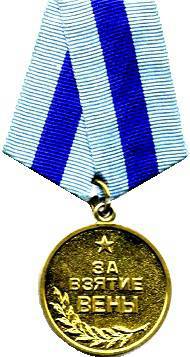
The Vienna offensive, which was completed on April 13 by liberating the Austrian capital from the Wehrmacht, was one of the brilliant offensive operations completing the Great Patriotic War. Therefore, at the same time, it was both fairly simple and incredibly heavy. These are the latest, decisive battles.
The relative ease of capturing the capital of Austria, in comparison with other operations, was due to the fact that the Red Army had already worked out a scheme for the destruction of enemy groups. In addition, by April 1945, our troops already felt the nearness of the Victory, and it was impossible to stop them. Although psychologically it was especially hard to fight at that time, people knew “some more, some more,” plus deadly fatigue.
It is clear that there was no easy walk: our total losses in this operation were 168 thousand people (of which more than 38 thousand people died). The Germans fiercely resisted, but their forces were already undermined - before that the Red Army and the Wehrmacht, in alliance with the Hungarian units, fought hard in Hungary. Hitler ordered to keep the Hungarian oil fields at any cost - the battle for Budapest and the subsequent Balaton operation included the number of the bloodiest battles of the Great Patriotic War. Our troops entered Hungary in October 1944 of the year, prior to this having conducted the Belgorod operation, and only at the end of March did 1945 reach Austria. The attitude of the population was also different; if the Hungarians mostly supported the Nazis, were hostile to the Red Army, the Austrians were neutral. Of course, they did not meet with flowers and bread and salt, but there was no hostility.
Sturm of Vienna (5 - 13 April 1945 of the year)
The assault on the Austrian capital was the final part of the Vienna Offensive, which went from March 16 to 15 on April 1945 by 2 (commander Marshal of the Soviet Union Rodion Malinovsky) and 3 of the Ukrainian Front (commander Marshal of the Soviet Union Fyodor Tolbukhin) using 1- Bulgarian Army (Lieutenant-General V. Stoychev). Its main goal was to defeat the German troops in western Hungary and eastern Austria.
Part of the troops of Army Group South (Commander General of the Infantry O. Veler, Colonel-General L. Rendulich from April 7), Part of Army Group F commander Marshal von Weichs opposed our troops, March 25 Army Group "E" (Commander Colonel-General A. Löhr). The German High Command attached great importance to the defense of the Vienna direction, planning to stop the Soviet troops on these lines and stay in the mountain-wooded areas of Austria, hoping to make a separate peace with England and the United States. However, on March 16 - April 4, Soviet forces broke through the German defenses, defeated the forces of Army Group South, and reached the approaches to Vienna.
For the defense of the Austrian capital, the German command created a fairly strong group of troops, in its composition the remnants of 8 tank and the 1st Infantry Division from the 6th SS Panzer Army, withdrew from the Lake Balaton area, and about 15 separate infantry battalions and Volkssturm battalions were formed. The entire staff of the Vienna military school was mobilized to defend Vienna, 4 regiments of 1,5 thousand people each were created from the Vienna police. The natural conditions of the area around the city favored the German side. From the west, Vienna was covered by a ridge of mountains, and from the north and east sides - by a powerful water barrier, the wide and abundant Danube. On the southern side, on the outskirts of the city, the Germans created a powerful fortified area, which consisted of anti-tank ditches, a developed system of fortifications - trenches, pillboxes and bunkers. Ditches were dug in all tank-hazardous areas along the outer circumference of Vienna, and anti-tank and anti-personnel barriers were installed.
The Germans prepared a significant part of their artillery for direct fire, to strengthen the anti-tank defense of the city. Firing positions for artillery were equipped in parks, gardens, squares and squares of the city. In addition, in the destroyed houses of the city (from blows aviation) guns and tanks that were supposed to fire from an ambush were disguised. The city streets were blocked by numerous barricades, many stone buildings were adapted for long-term defense, becoming real bastions, firing points were equipped in their windows, attics, basements. All bridges in the city were mined. The German command planned to make the city an insurmountable obstacle to the Red Army, an impregnable fortress.
The commander of the 3-th Ukrainian Front, F. I. Tolbukhin, planned to take the city with the help of 3-s simultaneous strikes: from the southeast side - by the troops of the 4-th Guards Army and the 1-th Guards Mechanized Corps, from the southern and south-western sides - by the troops 6 of the Guards Tank Army with a tank corps attached to it to assist the 18 and part of the troops of the 9 of the Guards Army. The rest of the forces of the 9 Guards Army had to go around Vienna from the west and cut off the withdrawal paths for the Nazis. At the same time, the Soviet command tried to prevent the destruction of the city during the assault.
5 April 1945, the Soviet troops launched an operation to capture Vienna from the southeast and south. At the same time, mobile units, including tank and mechanized units, began to bypass the capital of Austria from the west. The enemy responded with fire and fierce infantry counterattacks with reinforced tanks, trying to prevent the advance of Soviet troops into the city. Therefore, on the first day, despite the decisive actions of the Red Army troops, they did not manage to break the resistance of the enemy, the advance was insignificant.
All the next day - April 6 were fierce battles on the outskirts of the city. By the evening of this day, Soviet troops were able to reach the southern and western outskirts of the city and broke into the adjacent suburbs of Vienna. Persistent battles began already in the city. Forces 6-th Guards Tank Army, made a detour, in difficult conditions of the eastern spurs of the Alps and went to the western approaches of the city, and then on the southern bank of the Danube. The German group was surrounded on three sides.
The Soviet command, trying to prevent unnecessary casualties among the civilian population, to preserve the beautiful city and its historical Heritage, on April 5, appealed to the population of the capital of Austria with an appeal to stay in their homes, on the ground and thereby help the Soviet soldiers, not allowing the Nazis to destroy the city. Many Austrians patriots of their city responded to this appeal of the command of the 3rd Ukrainian Front, they helped the Soviet soldiers in their difficult struggle for the liberation of Vienna.
By the end of the day on April 7, the forces of the right wing of the 3rd Ukrainian Front partly took the Vienna outskirts of Pressbaum and continued to move east, north and west. On April 8, stubborn battles continued in the city itself, the Germans created new barricades, blockages, blocking roads, laying mines, land mines, throwing guns and mortars into dangerous directions. During April 9-10, Soviet forces continued to advance with fights to the city center. The Wehrmacht provided especially stubborn resistance in the area of the Imperial bridge over the Danube, this was due to the fact that if the Soviet troops came to him, the entire German group in Vienna would be completely surrounded. Danube flotilla landed troops to capture the Imperial Bridge, but strong enemy fire stopped him 400 meters from the bridge. Only the second landing party was able to capture the bridge, not allowing it to explode. By the end of April 10, the defending German group was completely surrounded, its last units resisted only in the city center.
On the night of April 11, our troops began to force the Danube Canal, and the final battles for Vienna were under way. Having broken the resistance of the enemy in the central part of the capital and in the neighborhoods that were located on the north bank of the Danube Canal, the Soviet troops divided the enemy garrison into separate groups. The “mopping-up” of the city began - by lunchtime on 13, on April, the city was completely liberated.
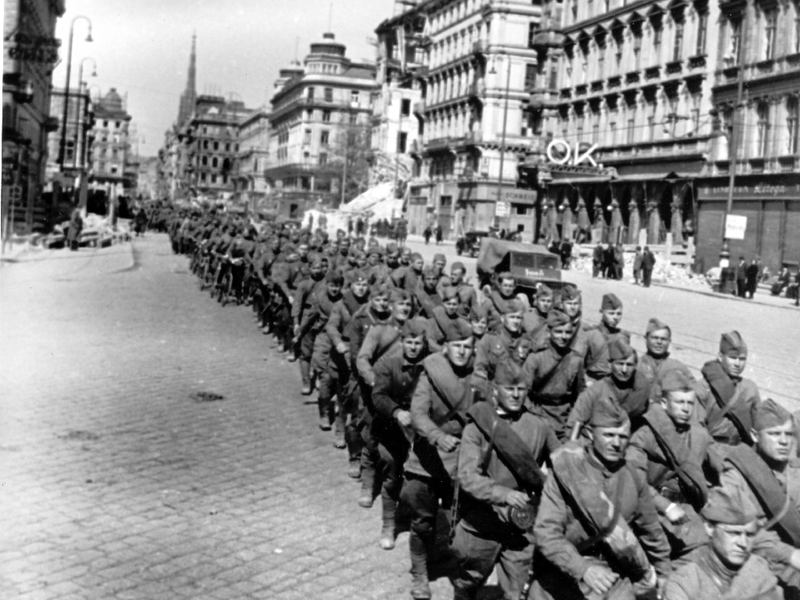
Results of the operation
- As a result of the offensive of the Soviet troops in the Vienna offensive operation, a large group of Wehrmacht was defeated. The forces of the 2 and 3 of the Ukrainian fronts were able to complete the liberation of Hungary, occupied the eastern regions of Austria, together with its capital, Vienna. Berlin has lost control over another large industrial center of Europe - the Vienna industrial region, including the economically important Nagykanizhsky oil region. The road was opened to Prague and Berlin, from the south. The USSR laid the foundation for the restoration of the statehood of Austria.
- Fast and selfless actions of the Red Army did not allow the Wehrmacht to destroy one of the most beautiful cities in Europe. Soviet soldiers were able to prevent the explosion of the Imperial Bridge over the Danube River, as well as the destruction of many other valuable architectural structures that the Germans prepared for the explosion or were set on fire by Wehrmacht during the retreat, among them St. Stephen’s Cathedral, the Vienna City Hall and other structures.
- In honor of another brilliant victory of the Soviet troops 13 on April 1945 of the year in 21.00 in the capital of the USSR - Moscow was given the victorious salute of 24 with artillery volleys from 324 guns.
- To commemorate this victory, the 50 combat units that distinguished themselves in the battle for Vienna received the honorary title “Vienna”. In addition, the Soviet government established the medal "For the capture of Vienna", which was awarded to all participants in the fighting for the capital of Austria. In Vienna in August 1945, a monument was erected on the Schwarzenbergplatz Square in honor of the Soviet soldiers who died in the battles for the liberation of Austria.
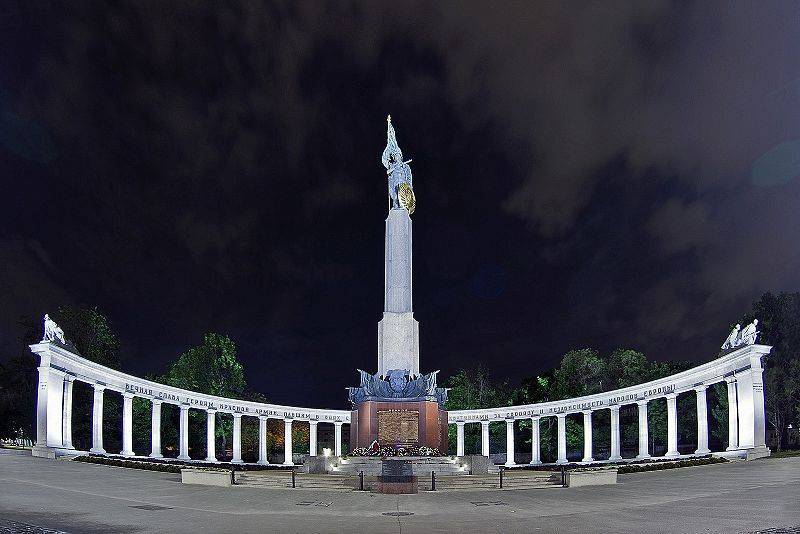
Monument to the soldiers of the Red Army in Vienna.
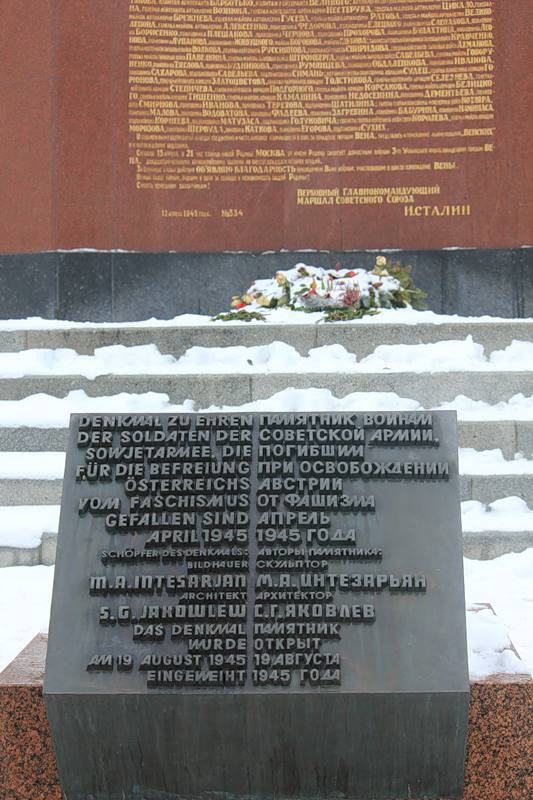
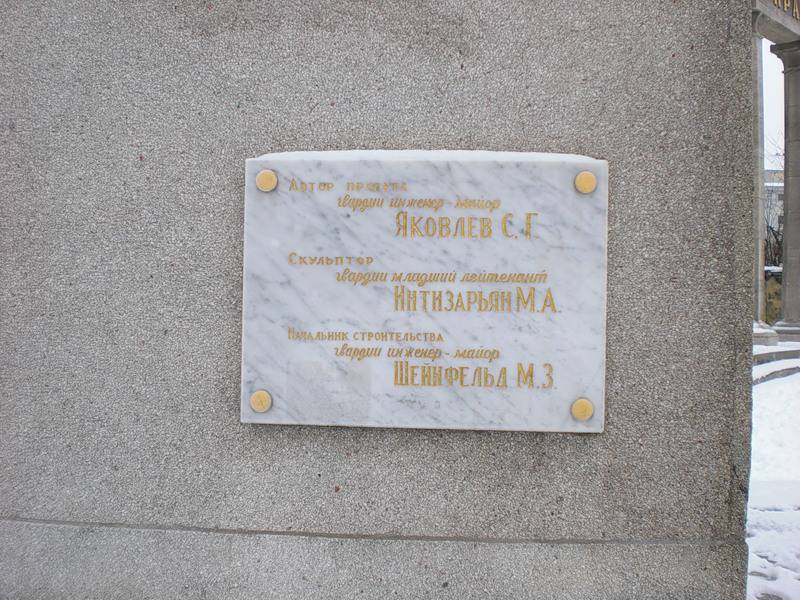
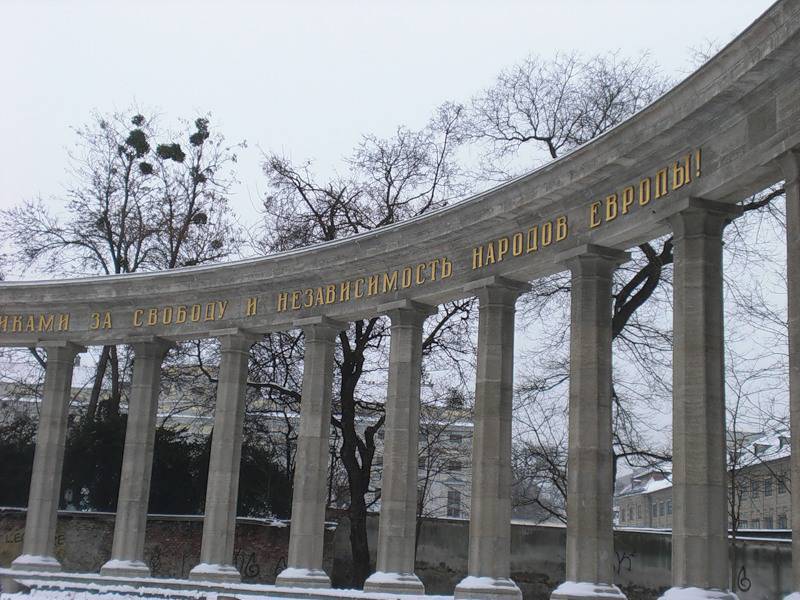
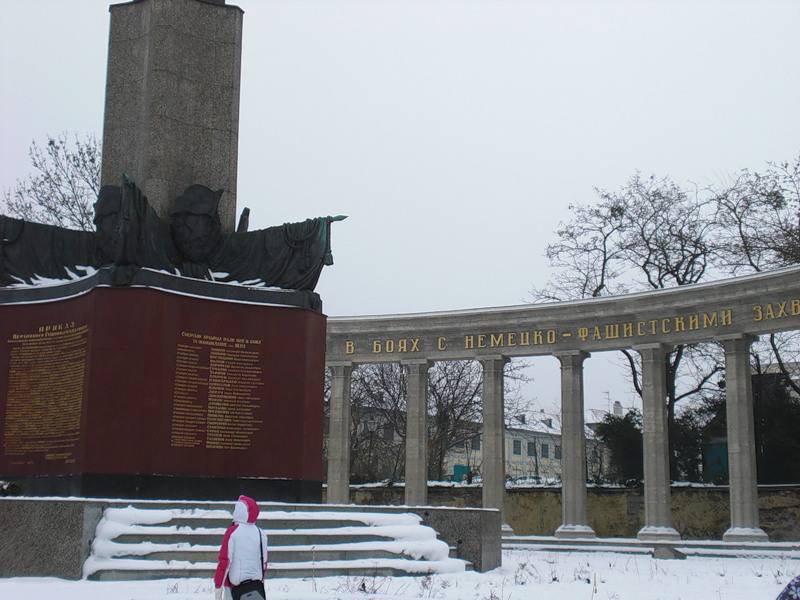
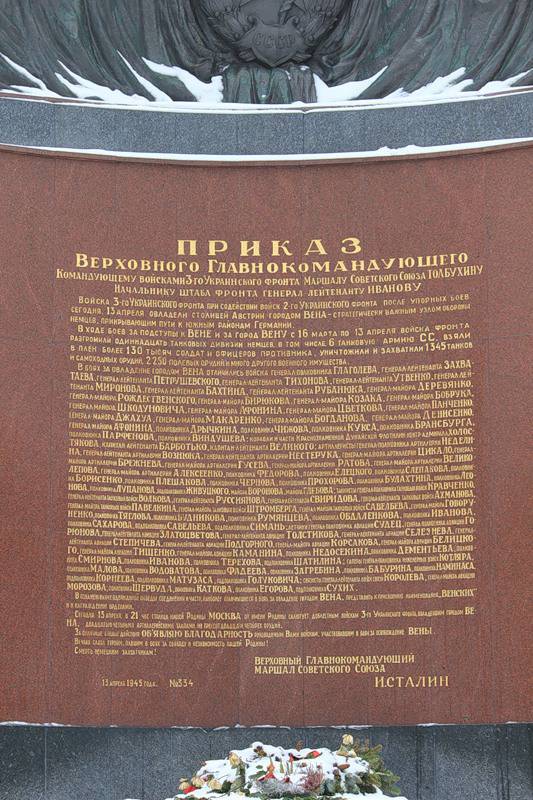
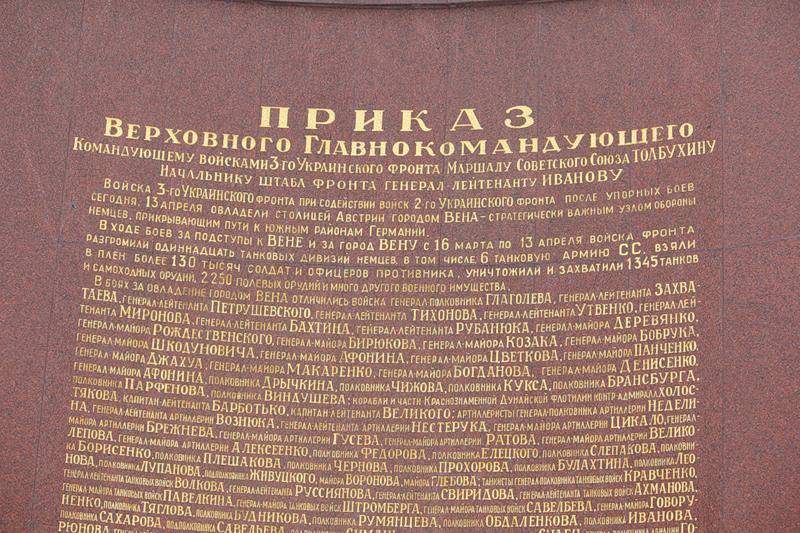
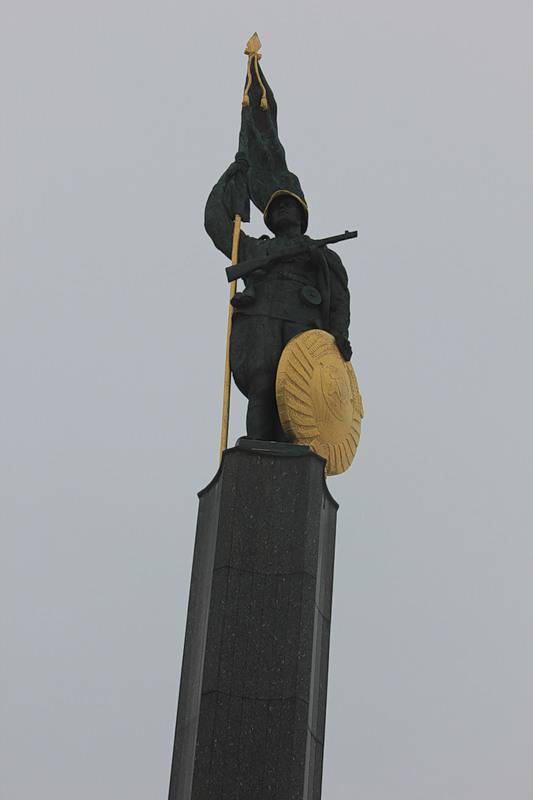
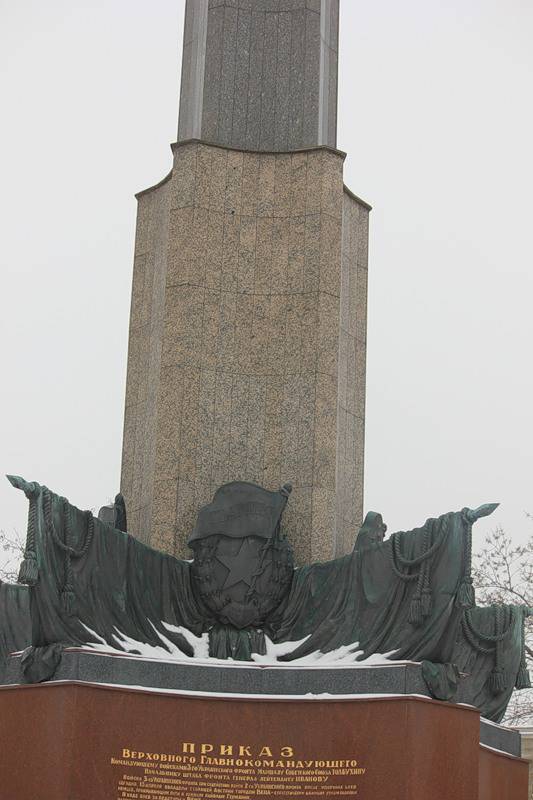
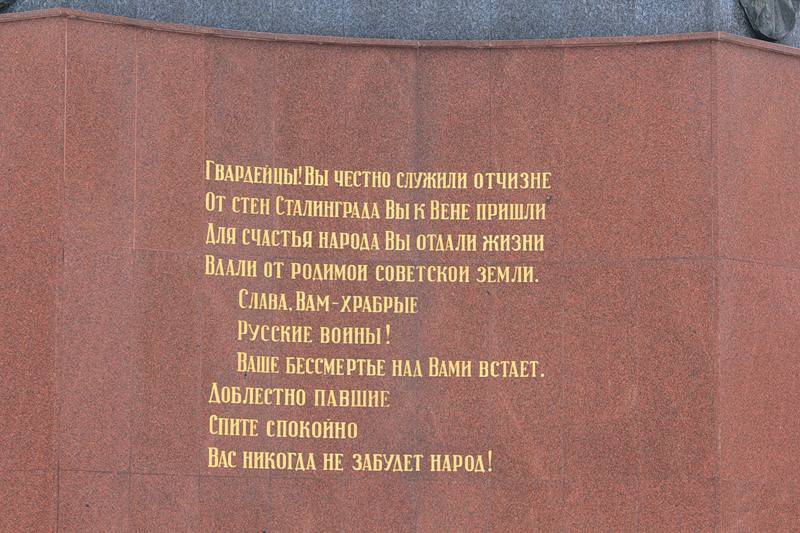
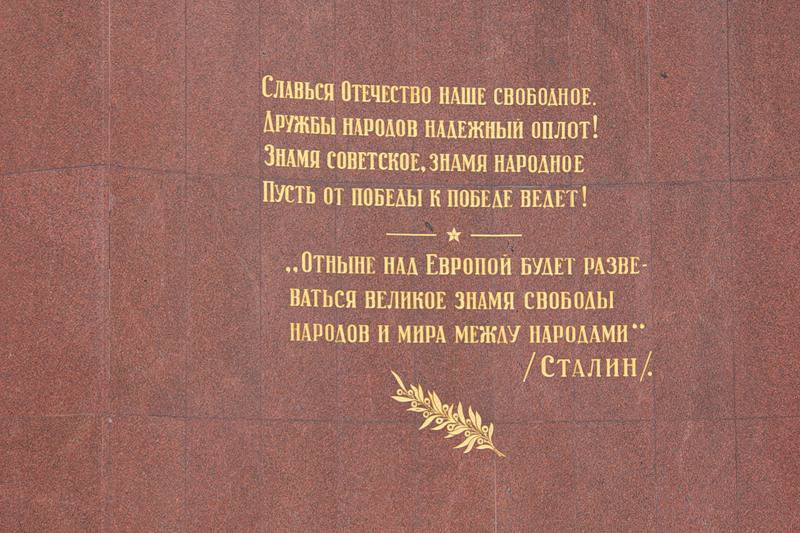
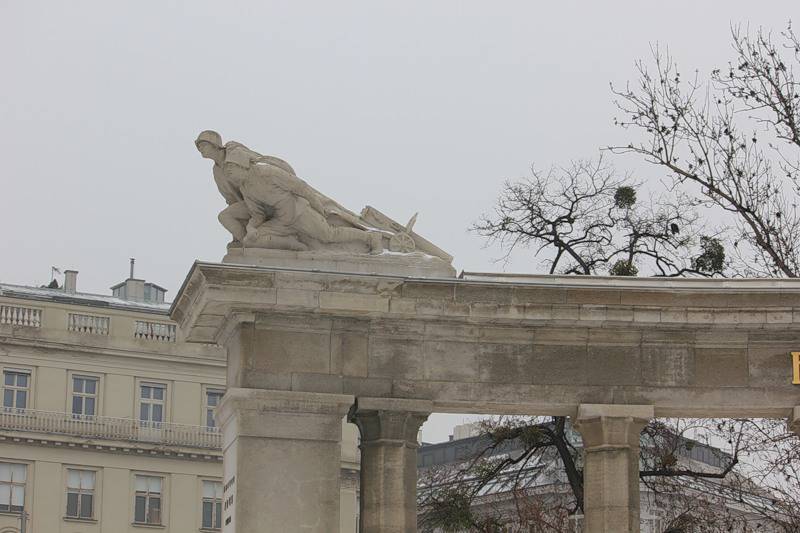
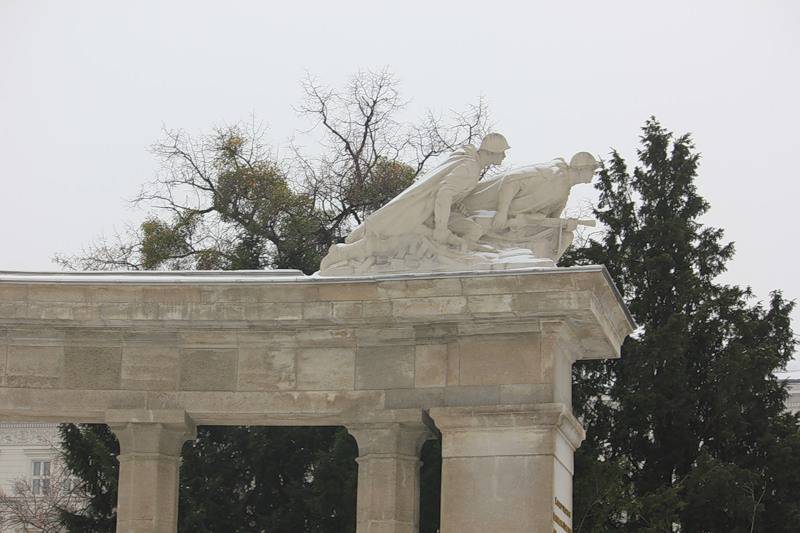
Sources of:
The history of the Second World War. 1939 — 1945. Volume Ten. M., 1979.
http://www.warmech.ru/easteur_0/aust00.html
http://militera.lib.ru/memo/russian/9may/13.html
http://ru.wikipedia.org/wiki/Венская_наступательная_операция
http://warhistory.livejournal.com/2028318.html
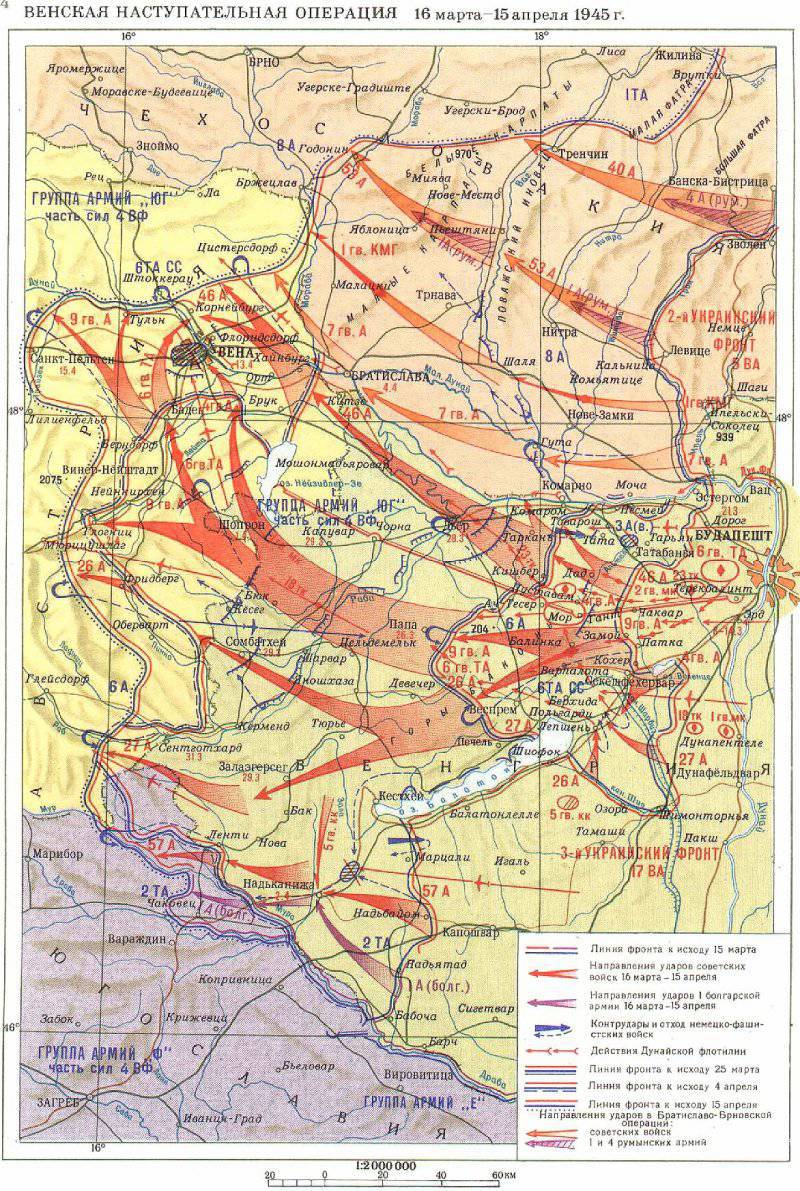
Information